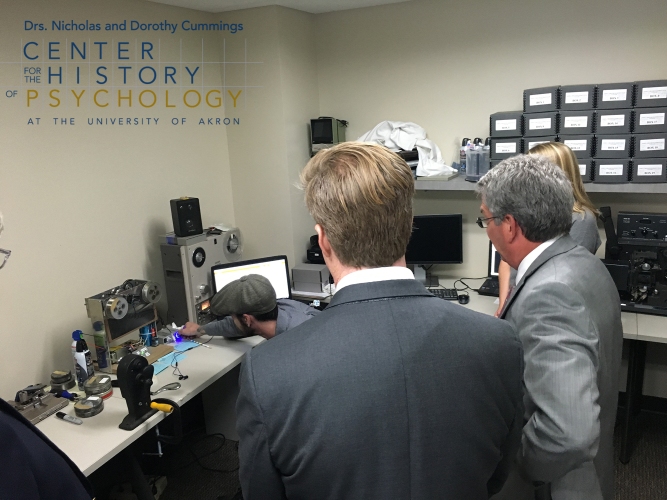Contributed by Lizette R. Barton.
Yesterday was Parents’ Day and since psychology and parenting go hand in hand, I was charged with writing a blog for the occasion.
As I mother, I thought I could kill a couple of birds with one stone and gather helpful information about motherhood from the archives, use that information in my own life, and then blog about it. But then I realized I’m winging this whole parenting thing, so even if I found “helpful” information, I wouldn’t use it anyways.
Next I considered digging into the collections to see what I could unearth about “refrigerator mothers,” but then I realized I am sick and damn tired of mom guilt.
Then I thought, maybe parenting alongside the history of child development might be cool, but I remembered that I am currently embroiled in the almost-terrible-twos and the absolutely-infuriating-threes and I am learning plenty about independence milestones at home.
Then it came to me. Beyond the theories and the research and the publications, psychologists have parents. And some were even parents themselves.
So instead of an intellectual blog, I give you this fluff piece: psychologists are parents too.
Did you know that Knight Dunlap had a mother? It’s true!
Sure, he was at Johns Hopkins alongside John B. Watson and he helped established the Journal of Comparative Psychology and and he went on to chair the psychology department at UCLA, but he had a mother! Not only that, but she wrote letters to him and in 1906 offered to butcher one of her best chickens for him. If that doesn’t scream good parenting, I don’t know what does.

“Did you remember that your birthday was this week and Thanksgiving comes next week? I should be glad to kill one of my best chickens for yours. Turkey is 20⊄ per pound and very scarce at that.” Knight Dunlap papers, box M570, folder “Personal”
Lillie Lewin Bowman had a mother. And before she patented the pour spout, she was just a gal graduating from Berkeley with a mother who believed in her.

Lillie Lewin Bowman papers, box M92.2, folder “Professional”
Lois B. Murphy had a mother. And a father. And when she was born in 1902, they started this adorable baby book for her.

Gardner and Lois B. Murphy papers, box M1258, folder “Certificates”
Later, Lois Barclay married fellow psychologist Gardner Murphy and guess what? They became parents! Here’s an image of Gardner with one of their children in 1953.

Gardner and Lois B. Murphy papers, box V40, folder 2
Other psychologists were also parents.
Check out this 1936 (or maybe 1937) newspaper announcement of Rosemary Young’s third birthday party. Her father was psychologist Paul T. Young. Sure, he was one of Titchener’s doctoral students and he spent a year on the streets of Berlin with his pseudophone, but he was also a dad who knew how to throw a birthday party.

Paul T. Young papers, box M100, folder “Miscellaneous”
And here’s a photo of renowned social psychologists Carolyn & Muzafer Sherif with one of their children.

Gardner and Lois B. Murphy papers, box V40, folder 2
And finally, we all know Abraham Maslow as the psychologist at the very heart of humanistic psychology who devised the well-known and oft-cited theory of the hierarchy of needs.
He was someone’s dad.

Abraham Maslow papers, box M4439, folder “Biographical 3”

